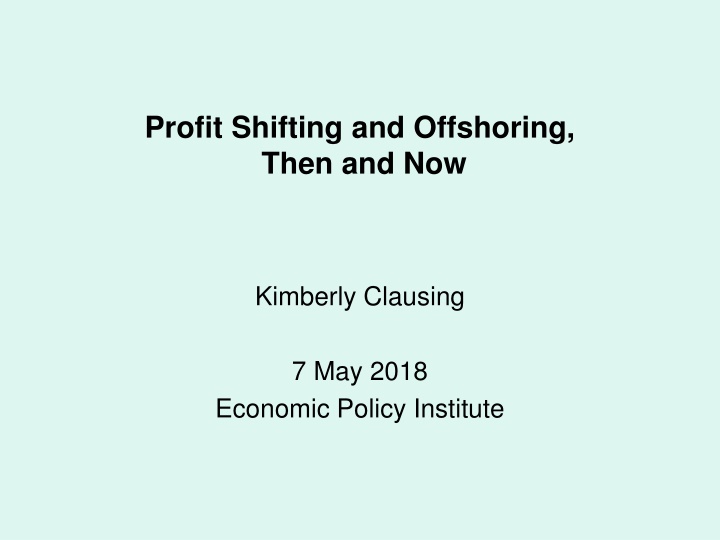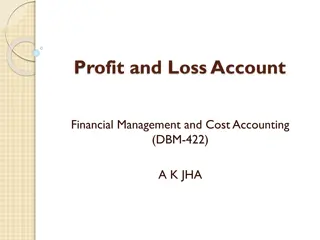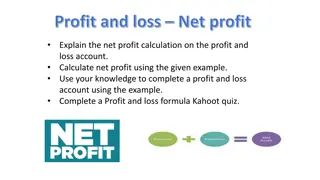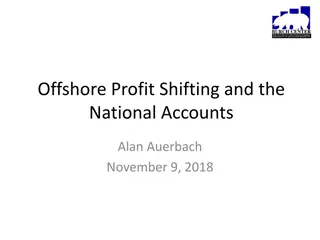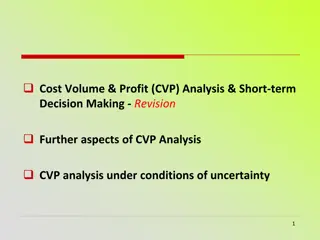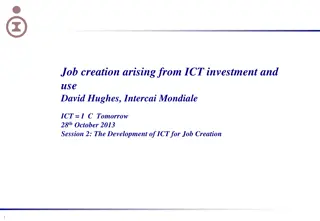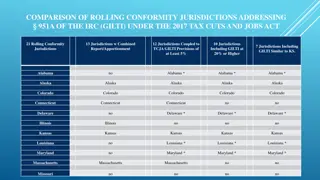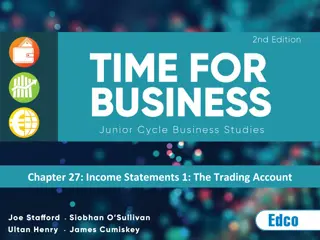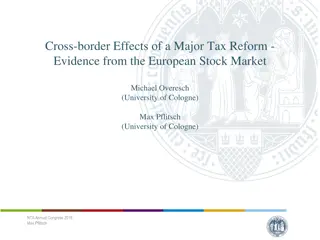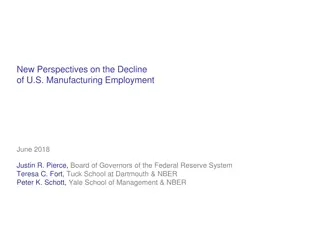Profit Shifting and Offshoring: Addressing Challenges with TCJA
Addressing the incentives of prior laws and the problems the TCJA aims to solve, including profit shifting, repatriation issues, and competitiveness of U.S. companies. The TCJA implements significant changes in corporate tax rates and international provisions to tackle these challenges and boost revenue. However, uncertainties and complexities remain.
Download Presentation

Please find below an Image/Link to download the presentation.
The content on the website is provided AS IS for your information and personal use only. It may not be sold, licensed, or shared on other websites without obtaining consent from the author.If you encounter any issues during the download, it is possible that the publisher has removed the file from their server.
You are allowed to download the files provided on this website for personal or commercial use, subject to the condition that they are used lawfully. All files are the property of their respective owners.
The content on the website is provided AS IS for your information and personal use only. It may not be sold, licensed, or shared on other websites without obtaining consent from the author.
E N D
Presentation Transcript
Profit Shifting and Offshoring, Then and Now Kimberly Clausing 7 May 2018 Economic Policy Institute
Questions What were the incentives of the prior law? What are the problems that TCJA tries to fix? What does the TCJA do? Will it live up to promises? Are there better ways forward?
Prior Law Bark v. Bite Supposed Worldwide Reach, but really a hybrid system. Statutory 35 percent rate, but effective rates far lower. Real and Imagined Problems Real Problem: Large incentive to book income abroad. Real for Some: Repatriation is discouraged. Imagined Problem: Competitiveness
Problem 1: Profit Shifting Top Income Sources, U.S. Multinational Firms in 2014 16% 14% 12% Share of World Foriegn Total 10% 8% 6% 4% 2% 0%
Revenue Loss to U.S. Government: Over $100 billion/year 120 100 80 60 40 20 0 -20
Problem 2: Repatriation? Shareholders can t get hands on $3 trillion offshore. But this doesn t constrain firm investment. Companies can easily create the equivalent of a tax-free repatriation. This set of firms is not cash or credit constrained. Problem 3: Competitiveness Two types of companies. For internationally mobile companies, statutory rate is largely irrelevant.
Our Competitive Companies: Corporate Profits as a Share of GDP, after-tax 12.0% 10.0% 8.0% 6.0% 4.0% 2.0% 0.0%
Competitiveness Problem? U.S. Share of Forbes Global 2000 Top Firms 0.5 0.45 0.4 0.35 0.3 0.25 0.2 0.15 0.1 0.05 0 GDP GDP in PPP Global 2000 Count Global 2000 Sales 2014 Global 2000 Profits 2016 Global 2000 Assets Global 2000 Market Cap.
Enter the TCJA. What does it do? Huge Cut in the Corporate Stat. Rate : - $620 b/ 10 years Complex Cut in Pass-Through Tax; - $265b International Provisions (- $16 b) Territorial (- $224 b) Base Protections: GILTI (+ $112b) , BEAT (+150b) FDII (- $64) Deemed Repatriation Tax at 8 or 15.5 Percent (Raises $340 b/ 10 years) Large Deficits ($1.5 trillion + , CBO revised up) Many Sources of Uncertainty, Complexity
What does the TCJA promise? What does it deliver? 1. Less profit shifting? 2. More investment? And, thus, wage growth? 3. A territorial, competitive, tax system? 4. Reform?
Promise 1: Less Profit Shifting? What is the baseline? International provisions do not raise revenue. Territorial works against base protection. GILTI makes US least desirable place to book income; both low tax and high tax foreign income is preferred. Will tax directors stop doing their job if the margin is smaller? BEAT is novel but confusing. Interactions with other provisions befuddle top experts and practitioners. Are these provisions sustainable? Everyone is disappointed.
Promise 2: Investment and Wage Growth? What was holding back investment? No evidence companies were cash constrained. No evidence that repatriation fuels investment or job creation. Many investments are debt-financed; these are less tax advantaged under current law than before. Excess profits important. 75% of corporate tax base is excess profit. That changes implications of corporate tax. What is the counterfactual? Vast majority of economists agree tax cuts were oversold.
Promise 3: Territorial, Competitive System? Is current law truly territorial? Other countries are not sitting still. Threats to world trading system do not make U.S. companies more competitive. Nor does underfunding the government. New incentives to shift real assets offshore. FDII is not reliable, does not help with sales to U.S. market, and discourages US assets. Most important, competitiveness goes beyond tax.
Promise 4: Is this even reform? Not revenue neutral despite needs, robust economy. Regressive after 35 years of increased inequality. Not politically stable; partisan, rushed process. Vast new sources of complexity and uncertainty. Pass-through provisions terrible. New types of income shifting dramatically exacerbated Business/capital income tax-preferred to labor income. Corporate tax is important to larger system. Only tool for taxing 70% of equity income. Excess profits should be taxed for efficiency, equity.
Repeal and Replace We are still overdue for a true tax reform. TCJA makes this harder. Not a stable equilibrium in international sphere. Ways for incremental improvement: Repeal FDII; meet goals other ways. Make minimum tax per-country; raise its rate; remove exclusion. Raise corporate rate. Repeal pass-through provisions. A careful move toward fundamental reform. BEPS, TCJA illustrate problems of incremental fix.
